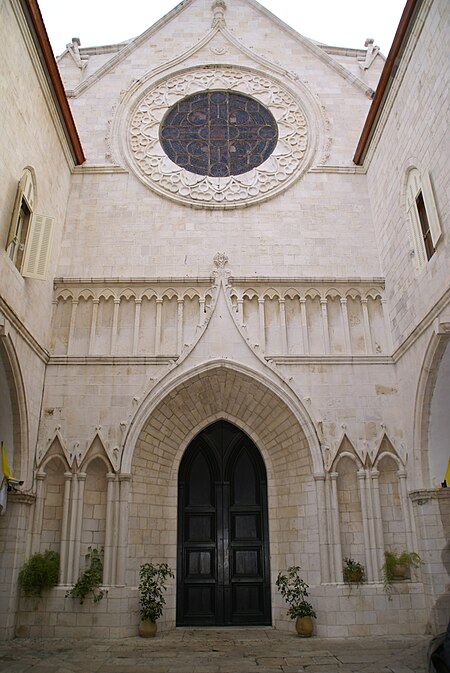Co-Cathedral of the Most Holy Name of Jesus
19th-century Roman Catholic church buildings in IsraelCathedrals in JerusalemCathedrals in the State of PalestineCatholic churches in JerusalemChristian Quarter ... and 4 more
Roman Catholic cathedrals in IsraelRoman Catholic cathedrals in the State of PalestineRoman Catholic churches completed in 1872Roman Catholic churches in Jerusalem

The Co-Cathedral of the Most Holy Name of Jesus, also known as the Holy Name of Jesus Co-Cathedral, is the co-cathedral, or technical cathedra of the Latin Patriarchate of Jerusalem. It is located in the Christian Quarter of the Old City of Jerusalem, about halfway between the New Gate and the Jaffa Gate, within the Old City walls.
Excerpt from the Wikipedia article Co-Cathedral of the Most Holy Name of Jesus (License: CC BY-SA 3.0, Authors, Images).Co-Cathedral of the Most Holy Name of Jesus
Paul Emile Botta, Jerusalem Morasha
Geographical coordinates (GPS) Address Nearby Places Show on map
Geographical coordinates (GPS)
| Latitude | Longitude |
|---|---|
| N 31.777777777778 ° | E 35.227222222222 ° |
Address
העיר העתיקה בירושלים וחומותיה
Paul Emile Botta
9410158 Jerusalem, Morasha
Jerusalem District, Israel
Open on Google Maps








